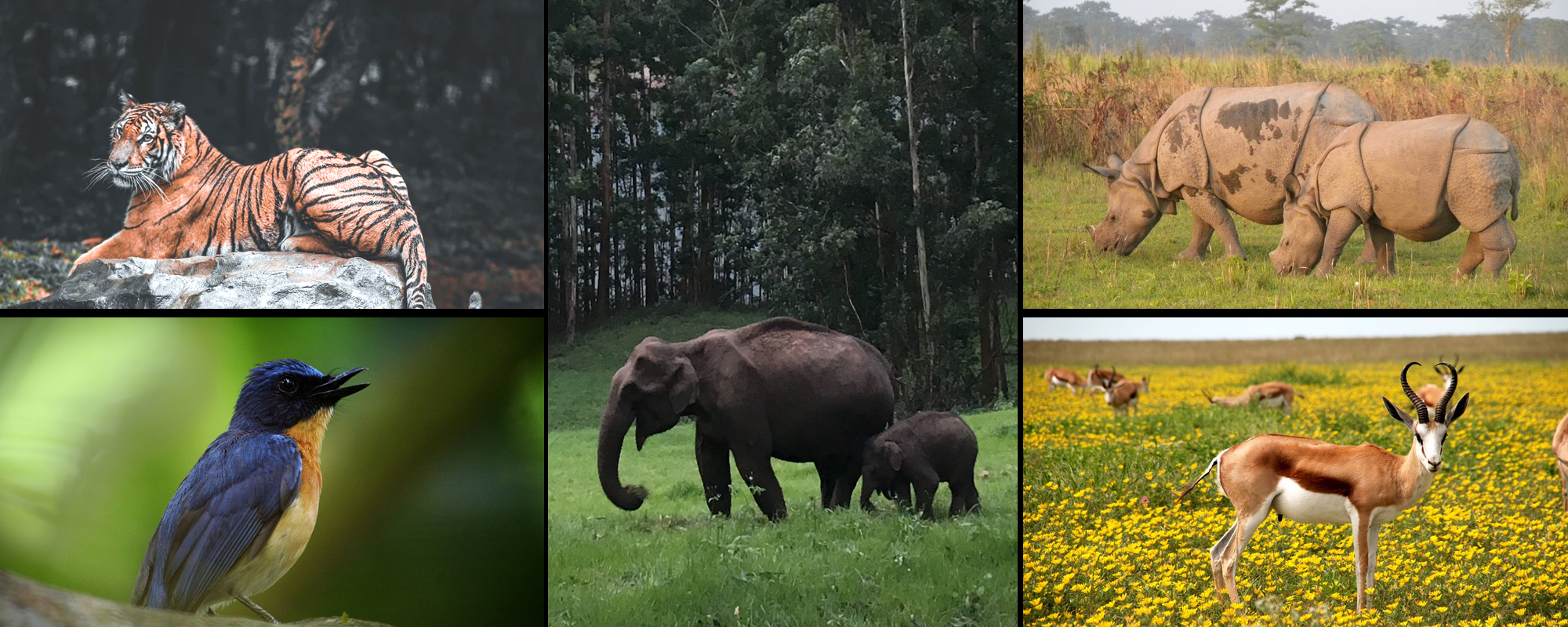
Situated in the Amravati district of the state of Maharashtra, Gugamal National Park is a stunning location for spending some time in the lap of nature and witnessing some of the most exotic wildlife. The area is a part of the Melghat Tiger Reserve which was announced a Tiger Reserve in the year 1973-74 under Project Tiger and was later on given its current status in the year 1975. The dense forest canopy of the park covers an expansive area of about 361.28sq. kilometers and inhabits a wide variety of flora and fauna.
Gugamal National Park is nestled amidst the Satpura Hill ranges also known as the Gavilgarh Hills. The national park is the place in Maharashtra where Tigers can be spotted in their natural glory and is also a well-recognized one in the state. The park is endowed with many natural elements including rivers that make it a scenic place and compels you to take your camera out. River Gadga and River Dolar flow within the park and Tapi River flow on the northern borders of the park. It is home to a variety of rare animals and birds including some migratory species as well. There are 90 species of trees, 66 species of shrubs, 316 species of herbs, 56 climbers, 23 sedge species, and over 99 grass species. The area in the park is rich with medicinal plants and trees that attract many researchers and pharmacists as well.
The park is a great escape from the hustle-bustle of life and offers the visitors a great experience of sightseeing and photography amidst nature and its marvelous creation. The forests in the park are rugged and hilly which are suitable for the park’s most significant inhabitants. Situated at an altitude of 350-1178m from sea level, the area receives an average rainfall of 1850mm and is a sight to behold after that. Visitors can enjoy the park by exploring it through jungle safari, trekking, bird safari, or by doing meditation in the peaceful environment.
Teak, Kusum, Ain, Tiwas, Aola, Lendia, Dhawada, Bamboo, Moyan, Mahua, Lanzin, Aonia, Bhaman, Ghote, Tectona, etc.
Mammals: Tiger, Panther, Sloth Bear, Wild Dog, Jackal, Hyena, Chausingha, Gaur, Barking Deer, Ratel, Flying Squirrel, Nilgai, Wild Boar, Langur, Rhesus Monkey, Macaque, etc.
Reptiles: Indian Cobra, Dwarf Gecko, Common Indian Monitor, Skink Snake, Bark Gecko, Indian Python, Dhamen, etc.
Birds: Jungle and Common Babblers, Yellow-billed Babbler, White-checked Barbet, Green Bee-eater, Crested Bunting, White-eyed Buzzard, Honey Buzzard, Common Stonechat, Laughing Dove, Black-shouldered Kite, Black Kite, White-throated Kingfisher, Common Kingfisher, Black Throated Munia, Rose-Ringed Parakeet, Rock Pigeon, Indian Peafowl, etc.
The weather in the park area is extreme with the temperature rising to over 43 degrees Celsius in summers and 6 degrees Celsius during the winters. The area receives an average rainfall of 1850mm and is very humid during the summers.
The best time to visit the park is between the months of October and May when the temperature is pleasant to explore the forest and no to less rainfall is experienced.
Nearest Train Station: The nearest railway station is Badnera/Amravati railway station, about 110km from the Gugamal National Park which is well connected to a road network to the park.
Nearest Airport: The nearest airport is Nagpur airport, about 225km from the Gugamal National Park. The airport is well-connected by road to Gugamal National Park and taxis are available outside the airport.
Road Accessibility : The park is well connected to all the major cities and places by a road network. You will find a number of government and privately owned buses that go the park at frequent intervals. It is approachable by the state highway Paratwada to Dharni.
Copyright 2012-2022 Indiamap Digital Pvt Ltd. All rights reserved. Privacy Policy | Terms of Use